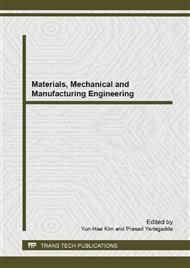p.165
p.170
p.175
p.180
p.187
p.192
p.196
p.201
p.205
The Kinetics Studies for the Adsorption of Furadan from Aqueous Solution by Orange Peel
Abstract:
As an agricultural waste available in large quantity in China, Orange peel was utilized as low-cost adsorbent to remove furadan from aqueous solution by adsorption. Pseudo-first-order, second-order models and intraparticle diffusion model were applied to analyze experimental data and thus elucidated the kinetic adsorption process. The high values of correlation coefficients showed the data conformed well to the pseudo-first-order rate kinetic model over the initial stage of the adsorption processes. The plots were not linear over the whole time range, implying that more than one process affected the adsorption: the first one representing surface adsorption at the beginning of the reaction and the second one was the intraparticle diffusion at the end of the reaction. The results in this study indicated that orange peel was an attractive candidate for removing furadan from the aqueous solution.
Info:
Periodical:
Pages:
187-191
Citation:
Online since:
November 2013
Authors:
Keywords:
Price:
Сopyright:
© 2014 Trans Tech Publications Ltd. All Rights Reserved
Share:
Citation:


